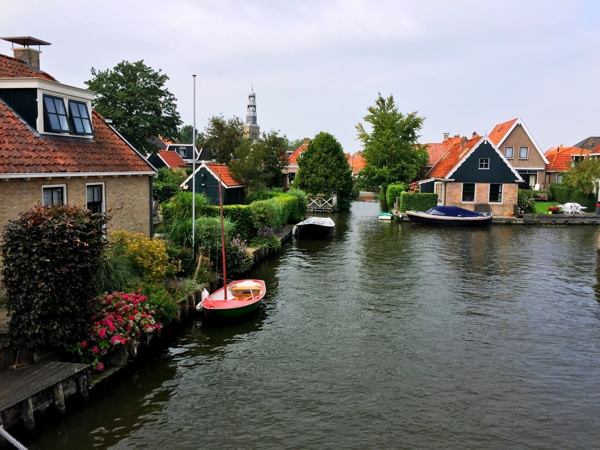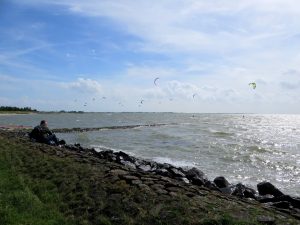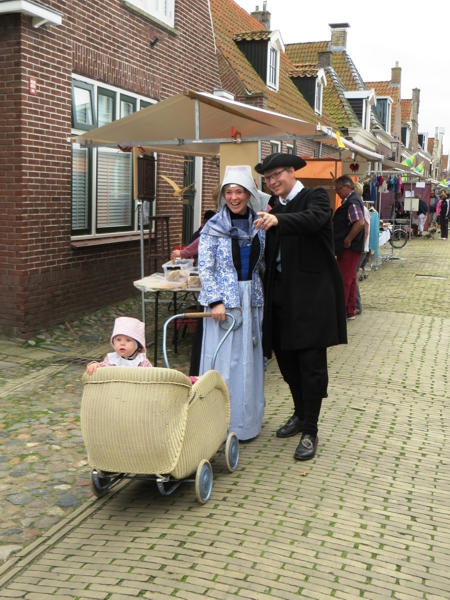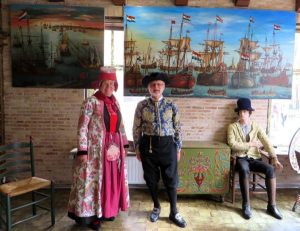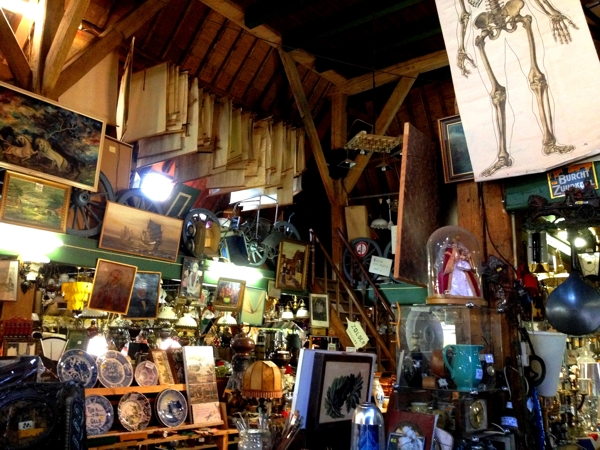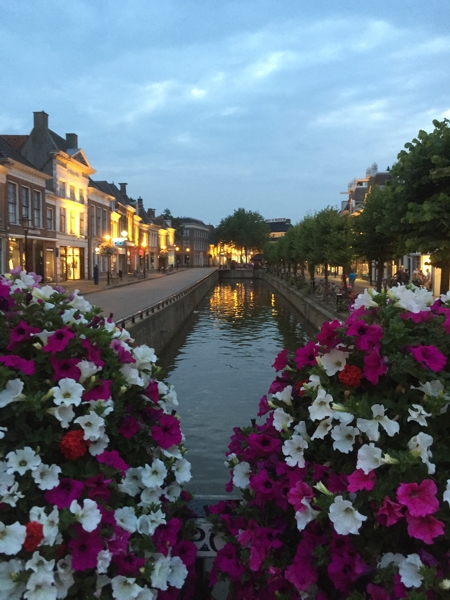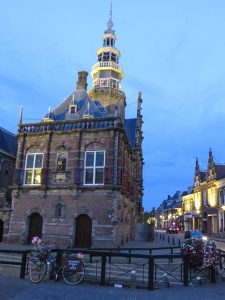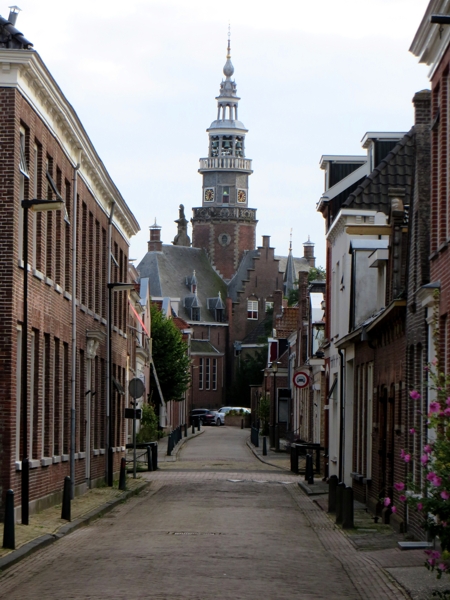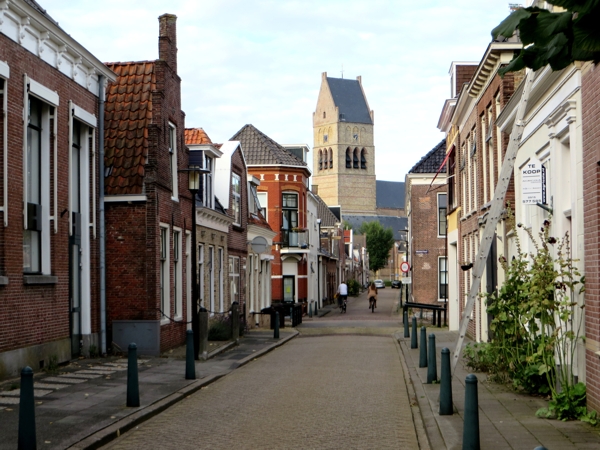This will be our third and final post (for now) about the wonderful province of Friesland in the Netherlands. Last time, we talked about our stay in Bolsward and our visit to the delightful fishing village of Hindeloopen. Now we will venture forth to the towns of Workum and Sneek. As with Bolsward and Hindeloopen, they too were filled with lovely historic architecture, waterways, drawbridges, and happy, fit, contented Dutch people.
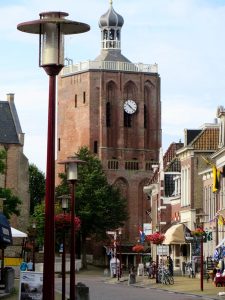
The town of Workum is surrounded by water and meadows with traditional Dutch windmills dotting the landscape as they turn in the sea breeze. The newer, less pretty windmills are also sprouting up but I guess that’s progress. Workum’s a very pleasant place that was, until the early eighteenth century, a busy seaport. It has a nice little main street with a few shops that seem to cater to tourists and seafaring types. There is a quaint little square where St Gertrudiskerk, Friesland’s largest medieval church, stands with its prominent massive bell tower. It is quite a small town, although there is a lot worth seeing. We were able to walk from one end to the other in about 30 minutes, and we were taking our time. We spent a little extra time strolling around the boat docks and enjoying the blue skies and sunshine before we hit the road for Sneek.
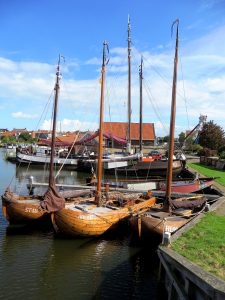
As opposed to Workum, Sneek (pronounced “snake,” like the reptile) is a bustling city filled with wonderful historic neighborhoods and plenty of places to shop or pop in for a bite and a tasty Dutch beer. When most people think of Dutch beer, their world-famous light lagers tend to spring to mind. But The Netherlands has a rich brewing tradition and produces many varieties that compare favorably with those of Belgium, their near neighbor. Sneek is generally considered to be the tourist capital of Friesland. They are extremely proud of their heritage and have a superb museum dedicated to the area’s nautical history. The Fries Scheepvaart Museum chronicles the maritime history of the area. There is something for everyone. Ship models, paintings, maps, navigational devices, weaponry, globes, and more can be seen. It’s well worth a visit even if you are strictly a landlubber.
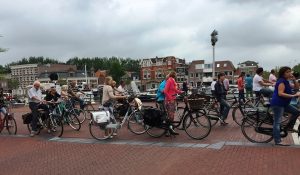
You need to be patient when crossing streets while wandering in a city like Sneek, where the canals compete with the roads for transportation. We found ourselves quite often surrounded by pedestrians and bicyclists waiting at intersections because the oncoming traffic was from boats that required the raising of a drawbridge. Not exactly something you
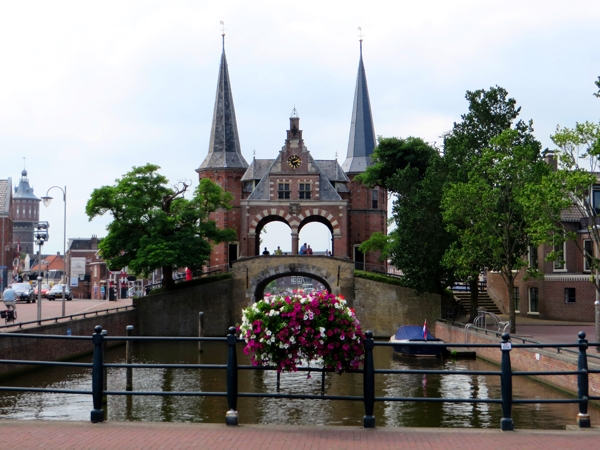
see in downtown Los Angeles. The heaviest water traffic stops took place near the double towered Rijksmonument Waterpoort (Water Gate). It looks like a castle with a bridge that goes across the canal. It’s also a great place to take photos and watch the local version of rush hour. We stood there amazed as we watched residents in little motorboats transporting their bags of groceries home in the back of their launches.
The tourist information office has come up with a slightly off-kilter and amusing video on their site to promote Friesland and Sneek. It’s worth
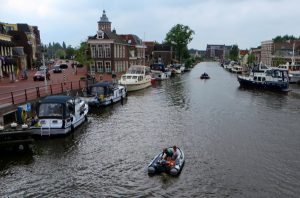
watching. It feels a bit like a cross between Money Python and a Dutch version of James Joyce’s Ulysses. It’s a quirky stream of consciousness, narrated by someone who sounds like he picked up a pack of smokes in Amsterdam before his recording session. Be sure to check it
out at http://www.sneekholland.nl/en/. Even if you never plan to visit Friesland, you should watch their tourism video. Just click on the ‘play’ icon that shows a winsome lass in a skimpy bikini leaning forward on a horse. Need I say more? Actually, it’s all rather clever and informative. These are people who know how to poke a little fun at themselves.
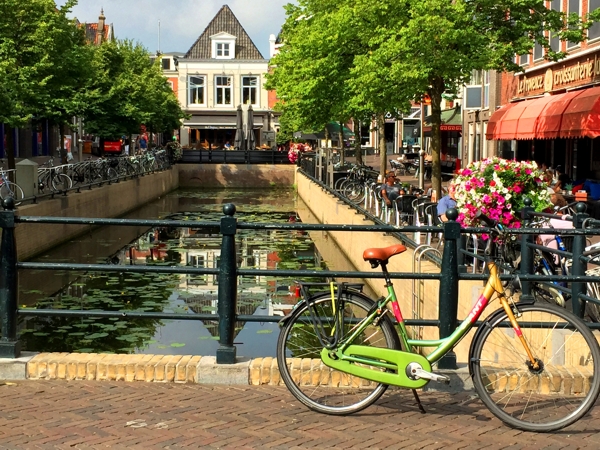
The pace of life in that part of the country is worth trying to emulate. Everywhere we went, locals were just enjoying life. All the towns we visited were so clean, you could eat off the cobblestones. Whole families were out riding their bikes together and nary a helmet on anyone. Wherever we looked, there was no trash, no graffiti, no excessive piercings, and no visible tattoos on any of the very well-scrubbed young people. In the evening everyone would be out drinking coffee or having a meal in an outdoor café while a singer performed for the customers and anyone else within earshot. We both agreed that we wanted this life, if only we wouldn’t have to speak Dutch. The Dutch language is very closely related to English and as we pointed out previously, the Frisian variety is even closer. If you close your eyes and ignore the actual words, it even sounds a lot like English—that is if English were being spoken in a parallel universe, and backwards, using random words. But just about everyone we encountered spoke English nearly as well as we did, and they were invariably very friendly. We loved every moment of our visits to Friesland and we plan to spend even more time exploring this marvelous region.


